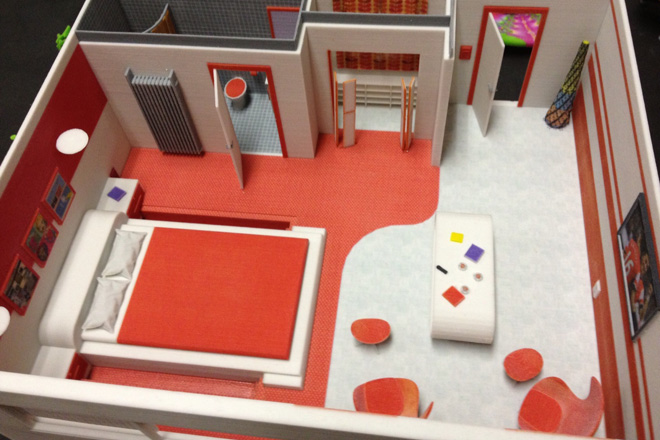With progress in technology comes a plethora of new opportunities for businesses, and the latest big thing to hit the interior design industry is 3D printing. Michelle Greeff, business manager at Hobs 3D, explores the benefits of 3D printing for interior and product designers.
Architectural firms large and small have adopted 3D printing as a critical part of their design development to improve communication and win business. Hot on their heels is the interior design industry, which is discovering that 3D printing is hugely useful for visualising designs in scale and in full colour. Furnishings and product designs can also be 3D printed in a variety of materials that replicate real life.
3D printing expert, Hobs 3D, received a tremendous reception at the Sleep event last November, which was the first time that 3D printing had been included in the exhibition. Hobs 3D collaborated with hospitality design firm, Purpose Design, to produce a range of 3D printed furnishing pieces – including light fittings, cups, glasses and even an objet d’art – which were displayed as part of the room layout.
Hobs 3D spoke with hundreds of industry professionals at the event, who were fascinated by the potential business applications of 3D printing. There has been a surge in interest in 3D printing from interior designers, who see real potential in convincing their clients of the benefits of using their services, as well as a means of engaging and explaining their concepts.
In the past it has sometimes been difficult for clients to understand and visualise the proposed plans for their buildings, as information displayed on a screen doesn’t always translate for those without a design background. This is an opinion also frequently voiced by architectural firms, and 3D printing shows the potential to cost-effectively create scaled models of the interiors of rooms and buildings in a manner which would resonate with all potential clients – regardless of whether they have a creative background or not.
3D printing used to be brought in at the end of a development, but now 3D models can be produced right at the beginning, complete with internal 3D models and landscaping if required, saving clients valuable time and money.
Hobs 3D has just invested £400,000 in new technologies, including a Stereolithography 3D printer machine which produces outstanding surface smoothness and can print 3D models as large as 750 x 650 x 550mm in size. This is the biggest and only 3D printer of its kind in London and will be particularly useful for producing models of interiors and exteriors.
Hobs 3D is also seeing a surge in interest in Augmented Reality, which is the next big technology. This allows clients to simply point a tablet or smartphone at a QR code and visualise a completed project in reality, to scale and more realistically than traditional 3D imagery. Virtual Reality uses the same tablet or smartphone to enter a virtual reality computer-simulated environment that can simulate a real or imagined world, which is brilliant for bringing interiors to life.
About Hobs 3D
Hobs 3D has the largest 3D print studio in the capital, and specialises in architectural models and interior room layouts. Hobs 3D has also just launched a 3D studio in Manchester, offering a one-stop shop for 3D scanning, 3D drawing, physical model production and reprographics at all stages of the design process.



